Interaction and knowledge about others are key to reducing racism and microagressions
by Li Sunpin & Verena Tse
One day in August, Anne-Marie Butundu Ilunga, walked into an MTR carriage and sat down. Immediately, the Chinese woman sitting next to her pulled out a tissue to cover her nose. It was not the first time the 18-year-old, who is black, has faced discrimination. This time, she decided to do something about it. She whipped out her phone, recorded the incident and posted it on Facebook. The video went viral, was picked up by news outlets and gained thousands of views and shares.
Some people were sympathetic and apologised to her but others messaged her saying they did not believe racism existed in Hong Kong. Her experiences over the past five and more years of living in the city contradict this.
Butundu Ilunga moved to Hong Kong from the Democratic Republic of Congo in 2011, but she says she still feels like a stranger. “No matter how long I stay here [Hong Kong], I am not going to feel it is my home,” she says.
It was particularly tough when she started school. Butundu Ilunga attended Sir Ellis Kadoorie Secondary School (West Kowloon) – a school with a mix of children from Nepali, Pakistani, Filipino and local Chinese backgrounds, and a handful of black students.

She says her local Chinese classmates were narrow-minded and racist. “They would call you monkey,” she recalls. Butundu Ilunga says many people in Hong Kong have pre-conceived ideas about ethnic minorities – for instance, many students think of Africans as poor people who go around naked or wearing very little.
She believes such stereotypes exist because of a lack of interaction and understanding among classmates. “When somebody asks me even a stupid question like, ‘is it your first time to wear clothes in Hong Kong?’, now I will try to explain to them,” she says, noting the racial discrimination she experiences decreases the more she interacts with those around her.
The small acts of discrimination which Butundu Ilunga encounters, for instance when people move to another seat on the MTR and on buses, or call her names, are acts of microagression – a term describing commonplace daily verbal and behavioural insults to people of colour, regardless of intention.
Innocent Mutanga, a 25-year-old student studying anthropology in the Chinese University of Hong Kong (CUHK) has similar experiences. He recalls an incident in which a woman on the MTR saw him with a young Chinese woman, the teaching assistant of his class, and accused him of using her for ulterior motives. “She was screaming that I was just with this girl because I wanted to get the Hong Kong ID,” explains Mutanga.
He says that on the bus, the seat next to him is always the last to be taken and he attributes this to a lack of knowledge about people of different races. Mutanga thinks mainland students are less likely to discriminate against him because they have had less access to negative portrayals of ethnic minorities on television and in advertisements.
In the three years he has been in Hong Kong, Mutanga has observed the negative influence of the media portrayals of ethnic minorities. He jokes that judging from the various advertisements posted in the streets and on the walls of buildings, a visiting alien would think the city is occupied by white people. For him, racial stereotypes are “delusions” and racism is a kind of mental affliction where the sufferers do not even realise they are carrying out acts of microaggression. .
Raees Begum Baig, an assistant professor in the Department of Social Work at CUHK, agrees that microaggression occurs because of the limited interaction between majorities and minorities. This lack of contact and interaction leads people to make generalisations about ethnic minorities based on their appearance and skin colour.
Baig believes parental education is an important channel for overcoming racial boundaries but that this is hard when some Chinese parents “do not want their children to mingle with ethnic minorities”.
Consequently, many local Chinese are unable to differentiate between the different groups of ethnic minorities living in Hong Kong today. They tend to blur the lines between migrants, refugees and ethnic minorities.
Migrants are people who recently moved to Hong Kong and plan to stay for long period of time. Refugees may have already spent some time in Hong Kong but do not plan to stay for good. Ethnic minorities are a very diverse group – some have been in Hong Kong for a short period of time while some have been here for several generations already.
Deepen Nebhwani, a 19-year-old student of Indian ethnicity, was born and raised in Hong Kong. As a local, he has a different view of racial discrimination. “I’ve grown up seeing this [discrimination] around me,” he says. “I’ve been here long enough to be immune to all of this.”
After nine years of studying at a school where a majority of students were from ethnic minorities, Nebhwani transferred to the Diocesan Boy’s School (DBS) in 2012. He recalls the first year in DBS was tough. “I can single-handedly count the number of non- Chinese people in the school. At that time we had like 1,400 students; I think less than five were non- Chinese,” he says.
At first, his classmates were a bit apprehensive about interacting with him, but eventually Nebhwani managed to find a group of friends. He suggests it takes longer for minorities in Hong Kong to fit in because people often do not want to leave their comfort zones. “Even though we call ourselves an international city, there are people who are unwilling to branch [out] to people who are not [one] of them,” he says, adding “if you try to fit in, they will accept you.”
The reluctance to interact with people who are different can extend to those from “privileged” racial backgrounds. Anna Gustafson, a 19-year-old journalism student at Hong Kong University recalls how a room fell silent after she entered for a university orientation camp event. The local students had assumed she would not want to interact with locals.
As a white person, Gustafson says she certainly feels that she is treated differently, but apart from being overcharged at the wet market, it is never negative. On the contrary, she feels awkward when people praise her light skin and blonde hair. “Everyone wants super white skin,” she says, noting Hong Kong still feels very Eurocentric.
The experiences of these interviewees suggest that when it comes to racial boundaries in Hong Kong, people from different ethnicities have different experiences. Hong Kong Unison, a charity that advocates for the rights of Hong Kong’s ethnic minorities, conducted a Survey of Racial Acceptance in 2012.
The survey of more than 1,800 people found respondents were more inclined to discriminate against ethnic minorities with darker skin colour. Just over 60 per cent of respondents accepted Pakistanis and Africans living in their neighbourhoods, while nearly 90 per cent said they would welcome Americans, just under 45 per cent of respondents were willing to befriend Africans. There were similar results when respondents were asked about whether they would accept people of different ethnicities in their workplaces and schools.
Hong Kong Unison’s advocacy approach focuses more on policy and tackling racism on a political, rather than individual level. Kayla Tam, the group’s campaign officer, says most community services tend to be short-term and have limited reach. “When you try to change things on the policy level, that trickles down and it also raises a standard for everybody,” she explains.
Hong Kong Unison was one of the groups that lobbied for a Race Discrimination Ordinance, which was implemented in 2009. Implementation of the legislation is overseen by the Equal Opportunities Commission (EOC). But Tam says the EOC’s complaints system is underused. In 2015, only 61 of the 714 complaints the EOC received were related to racial discrimination.
“Not many people have the resources or the time to go through with [the complaint]. The process is often quite frustrating for the complainants,” says Tam, whose organisation often represents clients and handles a number of cases that go to the EOC. Another issue is that complainants are usually pitted against big corporations or their employers. “The power dynamics are quite off-balance,” she adds.
Of the 54 complaints the EOC investigated in 2015, more than half were dropped due to the complainants’ wishes or a lack of evidence.
Despite the difficulties, some are willing to persist in fighting the discrimination they encounter. Matthew Timothy Corbin, a 25-year-old African American dancer and choreographer was turned down by three successive landlords while flat-hunting with his boyfriend over the summer.
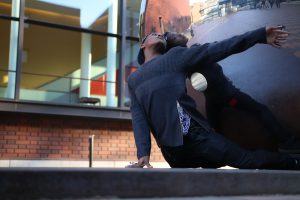
Photo courtesy of Corbin
The first time, Corbin saw a listing on Facebook and contacted the agent. The agent texted him to ask where he was from and what race he was. When he replied that he was African American, the agent rejected him, saying the landlady would not rent to African Americans as the last time she did so, the tenant did not pay his rent on time.
The second time, communications online with the agent went smoothly. On the day they went to see the flat, everything was fine when the landlady chatted with Corbin’s boyfriend in Cantonese as they walked up the stairs. However when she noticed Corbin following and realised they were renting the flat together, she immediately said no. “It was a two bedroom apartment so two people [renting it] makes sense. It is really about my race,” Corbin says.
The third attempt was no better. Corbin tried to rent a village house in Yuen Long but was told by the landlord: “I am sorry but I just don’t want to rent to you.”
He reported the first two cases to the EOC about three months ago and is waiting for the results of the investigation. The process may take a long time. The EOC usually tries to achieve conciliation between the parties but Corbin hopes to take the case to court.
“I expect to win,” he says. But even if he does not, he hopes his case can raise awareness and ensure racial discrimination is not swept under the carpet. “People will reevaluate what they are doing and realise that they may have this bias but that’s illegal. There are real consequences for discriminating against race. I want people to feel empowered to fight against discrimination. Even if I lose, if I can get the stories out there, I will be good,” says Corbin.
Edited by Vivienne Tsang




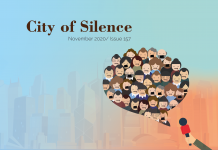


















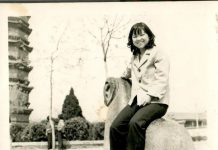

















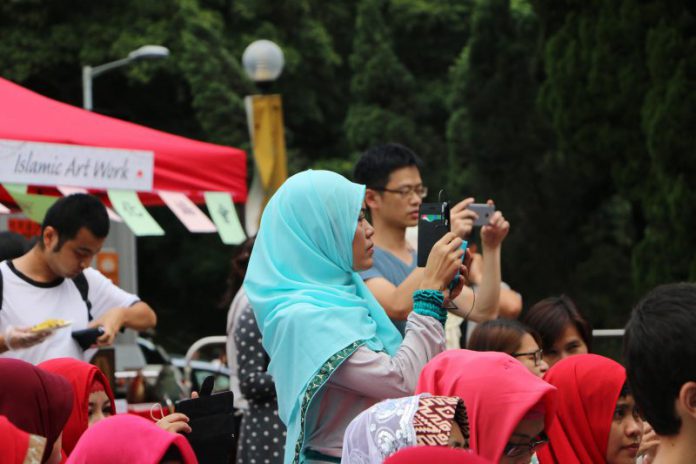


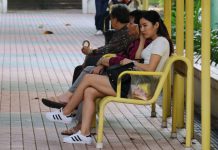
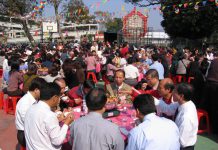

Good job Verena ! A well considered and unbiased article.